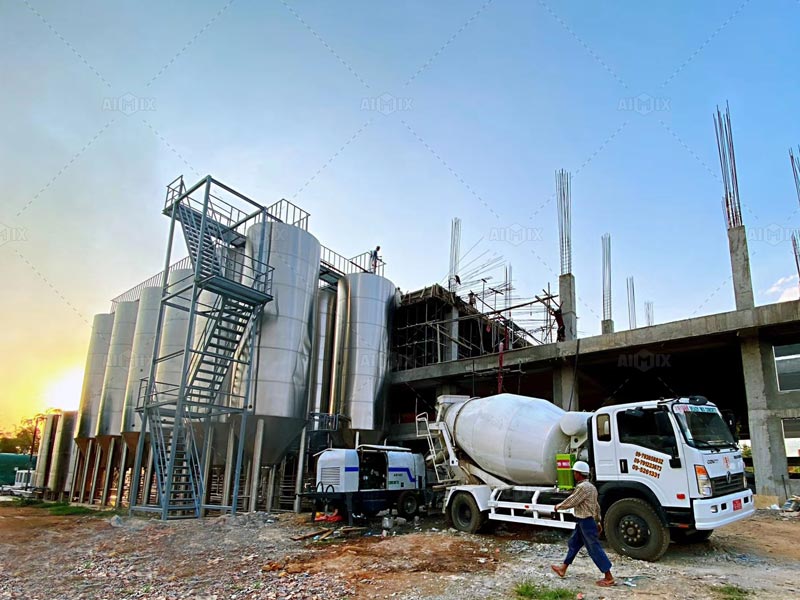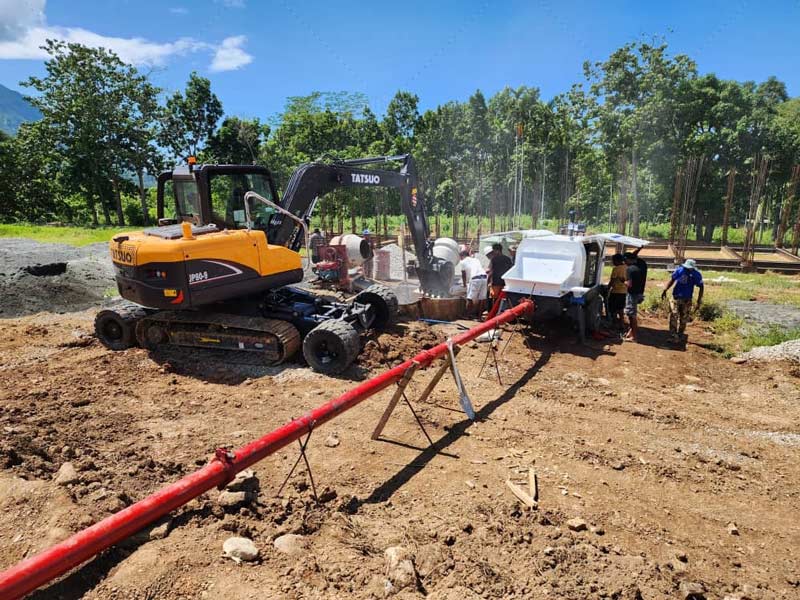Transportation and Personnel Safety Strategies in the Transfer of Aggregate Crusher Plant
Whether relocating due to project completion, accessing a new resource area, or optimizing production logistics, the movement of heavy machinery and supporting components must be handled with a detailed safety plan. From equipment stability to personnel protection, every aspect of the transfer process must be carefully managed. This article outlines key strategies for ensuring transportation and personnel safety during the transfer of an aggregate crusher plant, especially those involving large systems like a cone crusher or a complete stone crusher unit.
Understanding the Risks of Equipment Transfer
Moving an aggregate crusher plant(planta de agregados) requires coordination between transport teams, crane operators, electricians, and engineers. These projects often involve oversized loads, narrow access roads, varying terrain, and environmental hazards like rain, mud, or extreme temperatures. Without proper planning, the relocation process can lead to equipment damage, delays, or even serious accidents involving personnel.
Operators must be aware that components like a cone crusher or vibrating feeder may need to be disassembled, secured, and reinstalled under strict protocols to ensure post-transfer performance and safety. Recognizing these challenges early on allows for the implementation of robust safety strategies before any movement begins.

Pre-Transfer Safety Planning
Site Assessment and Route Evaluation
Before any equipment is moved, both the origin and destination sites should be carefully assessed. Considerations include terrain stability, access points, overhead clearance, road weight limits, and potential hazards such as steep slopes or soft ground. Route evaluation is especially critical when transporting heavy machinery like a stone crusher, as improper routing can lead to tipping or mechanical stress.
Mapping out turning radii, bridge load limits, and traffic controls ensures that each part of the aggregate crusher plant can reach its new location without incident.
Equipment Inspection and Disassembly Protocol
Every component of the crusher plant should be thoroughly inspected prior to relocation. This includes structural elements, hydraulics, and electrical systems. Worn parts or damaged supports should be replaced in advance to prevent failure during movement.
For modular units like cone crushers(chancadora conica), proper disassembly using manufacturer-recommended procedures ensures safe handling and reduces the risk of damage. All moving parts should be locked or secured, and hydraulic fluids or fuel should be drained where applicable.
Personnel Safety During Relocation
Defining Work Zones and Communication Protocols
Clearly marked work zones help prevent unauthorized personnel from entering hazardous areas during loading, lifting, or transport. High-visibility signage, barriers, and safety supervision should be in place throughout the operation.
In addition, effective communication among team members—via two-way radios, hand signals, or digital systems—ensures that instructions are followed precisely. This is especially important when maneuvering large components like crushers onto flatbed trailers or cranes.
Training and Use of Personal Protective Equipment (PPE)
Every person involved in the transfer process should receive specific training related to their task. This includes rigging safety, heavy equipment operation, and emergency response procedures. Proper use of PPE—such as helmets, gloves, safety vests, and steel-toed boots—is mandatory.
For crane and transport operators, additional certifications may be required to handle large components like a cone crusher safely. Having trained personnel on-site reduces the likelihood of accidents caused by inexperience or miscommunication.
Transport Execution and On-Road Safety
Load Securement and Vehicle Selection
To prevent movement during transit, all components must be properly secured using rated tie-downs, chains, and blocking mechanisms. Special attention should be given to tall or unbalanced loads that may shift during turns or on uneven roads.
The type of transport vehicle is also important. Low-bed trailers are commonly used for aggregate crusher plant components, and pilot vehicles may be required depending on local regulations. Escorts help manage traffic and guide oversized loads through challenging sections.
Weather and Environmental Considerations
Weather can significantly affect transport safety. Rain or mud can reduce traction and visibility, increasing the risk of vehicle instability or delay. In tropical or mountainous regions, common in parts of Latin America, transport plans should include contingency procedures for environmental delays or hazards.
Operators should monitor weather forecasts closely and be prepared to halt operations if conditions become unsafe. Avoiding night travel is also advisable unless the route is fully lit and monitored.
Post-Transfer Reassembly and Safety Verification
Final Installation and Alignment Checks
Once the aggregate crusher plant reaches its new site, a systematic reassembly process begins. Components such as feeders, conveyors, and crushers(trituradora de piedra) must be reinstalled according to precise alignment and foundation specifications. For systems involving a cone crusher, proper balance and vibration testing are essential before restarting operations.
Bolts should be torqued to manufacturer specifications, wiring should be rechecked, and lubrication systems should be refilled as needed. Skipping steps in this phase can lead to operational instability and future safety risks.
System Testing and Operator Briefing
Before full-scale operation resumes, the plant should undergo a controlled start-up. Safety switches, emergency stop buttons, and automation systems must be tested to confirm proper functionality. A final operator safety briefing helps ensure all team members are aware of the plant’s updated configuration and any changes in standard operating procedures.
Conclusion
Transferring an aggregate crusher plant is a complex operation that requires attention to detail and a strong focus on safety. From disassembly and loading to transport and reassembly, each phase presents its own set of challenges for equipment and personnel. By conducting thorough planning, implementing strict safety protocols, and leveraging skilled teams, operators can ensure that the movement of critical systems like a stone crusher or cone crusher is executed smoothly and without incident. In a high-stakes industry where uptime and safety go hand in hand, these strategies are not optional—they are essential.
Subscribe to unlock premium content
Sed at tellus, pharetra lacus, aenean risus non nisl ultricies commodo diam aliquet arcu enim eu leo porttitor habitasse adipiscing porttitor varius ultricies facilisis viverra lacus neque.



